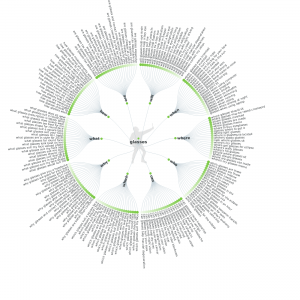Businesses run on contracts, but given their importance, many organizations don’t have true insight into how their employees, partners and customers access and manage contracts today. They could be stored in file cabinets or in folders on personal computers or network drives, in PDF or Excel or multiple other formats, and they can be circulated throughout the organization via email or even paper. The inefficiency – and insecurity!- of these outdated methods becomes apparent whenever a deadline approaches.
And what about the information contained in those contracts? How do you monitor critical dates, deadlines, obligations, or audit changes? Unstructured data in contract management is a dangerous thing because it leaves organizations open to missing something critical. Sadly, some companies don’t realize this until it’s too late or they may not even be aware of missed opportunities or liabilities.
For CIOs, centralizing contracts, related documents, and contract data in a secure, modern, dynamic and digital contract repository is the first and most important step any business can take to achieve contract lifecycle management (CLM) excellence. It’s a huge enabler of any broader digital transformation (DX) strategy, helps mitigate risk, increase compliance, do business faster, and uncover new opportunities.
Digital Contract Transformation Is a Pillar in Your DX Strategy
While digital transformation can broadly be defined as using digital technology to transform organizations, Digital Contract Transformation (DCX) specifically allows businesses to digitize their contracts and CLM processes. With DCX, businesses can harness the wealth of data in their contracts to deliver actionable insights by benchmarking, tracking and optimizing the KPIs most important to their digital transformation and organizational efforts while minimizing risk and ensuring compliance.
Key Performance Indicators You Need To Track
KPIs are all about data – setting benchmarks and tracking performance against them. Without the data, it’s impossible to do. Contract management software allows organizations to leverage that data to not only optimize contract management strategy and processes, but support and influence business objectives such as shortening contract cycles or improving customer experience.
The key CLM KPIs every CIO should track include:
- Average Number of Days in a Contract Lifecycle
When things are complex, they tend to take longer. This foundational KPI allows you to benchmark the current average total number of days in a contract lifecycle, and identify opportunities to improve it.
- Average Time to Achieve Contract Milestones
This KPI is focused on the pre-execution phase of a contract and understanding the average time to reach and execute each contract milestone like requesting an agreement, drafting one or negotiating it. How long does it take, are those time frames acceptable, and what can be done to improve them?
- Ratio of Complete, Outstanding and Missed Contract Obligations
The consequence of a missed obligation can be small or it can be huge. For this KPI, you’ll want to understand the ratio of complete, outstanding, and missed obligations and see how that varies by things like department or vendor.
- Total Value of Active Contracts
This total value of all active contracts being managed is a good KPI to monitor the health of not just your CLM process, but the overall business.
- Total Volume of Contracts in Process
This is a good way to help monitor your team’s workloads and high-level sales and purchasing activity.
- Total Number of Inbound Contract Requests
Knowing the total number of inbound contract requests, and the nature of how they are coming in, is key. And from a time management perspective, what percentage are accepted, rejected or declined and why?
- Number of Contracts by Risk Level
This KPI is about tracking the number of contracts by risk level and type like buy-side vs. sell-side or financial vs. brand risk.
- Number of Contracts by Required Compliance Controls
For this KPI, track the number of contracts by required compliance controls from both an internal and external regulatory requirement perspective.
- Percentage of Failed Contract Renewals
One of the big advantages of this KPI is it allows organizations to identify ways to prepare for and get out in front of renewals, especially ones scored as high risk.
- Frequency of Approved Language Use
For this KPI, benchmark and track the percentage of contracts generated on your own paper vs. third-party paper. The more agreements you have on your paper the more likely the use of your legal approved language and the lower the risk.
- Percent of Contracts Executed with E-Signatures
When it comes to e-signature, track the percent reduction on the total number of days from when the contract is sent out for signature to the execution of it. E-signatures can significantly accelerate that timeframe so pushing adoption of them should be a priority.
A modern contract management system centralizes all contracts, associated documents, and contract data in a secure, dynamic and digital contract repository. This allows CIOs to not only digitize contracts and processes, but also makes contract data instantly accessible and actionable for business intelligence purposes and digital transformation.
A version of this post originally appeared here.
Business & Finance Articles on Business 2 Community(51)






